Are you looking for a way to haul your boat or camper? A gooseneck hitch is a great option if you have the proper vehicle.
In this blog post, we’ll show you how to install a gooseneck hitch step-by-step.
Also provide some tips on what to look for when choosing the best gooseneck hitch for your needs.
How To Install Gooseneck Hitch?
To install a gooseneck hitch, you will need the following tools:
- Drill
- Hole saw
- Measuring tape
- Level
- Wrench
- Socket set
If you have all the tools ready, here is how to install the gooseneck hitch:
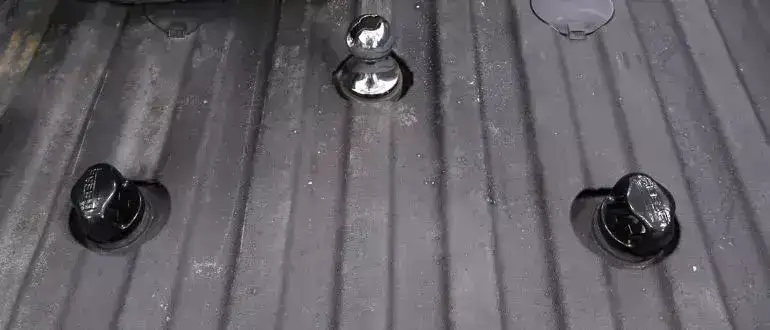
Step 1: Remove the Spare Tire and Trim Panel
The first step is to remove the spare tire and trim panel. This will give you access to the bed of the truck so that you can start drilling holes.
You might need to take off, or even saw trim pieces on the truck so there’s room for the gooseneck hitch.
These may include the heat shield and wheel well liners. To avoid damaging your car, only remove or trim what is necessary, and follow the instructions for your specific hitch.
Step 2: Measure and Mark the Holes
The next step is to measure and mark the holes for the gooseneck hitch.
There are typically four holes that need to be drilled. Two of the holes will be for the bolts that attach the hitch to the frame of the truck.
The other two holes are for the safety chains. Once you have all the holes marked, it’s time to start drilling.
Step 3: Drill the Holes
Now it’s time to drill the holes. Start with a small pilot hole and then use a hole saw to enlarge the holes to the appropriate size.
If you’re not sure what size to use, consult the instructions for your hitch.
Step 4: Install The Gooseneck Hitch
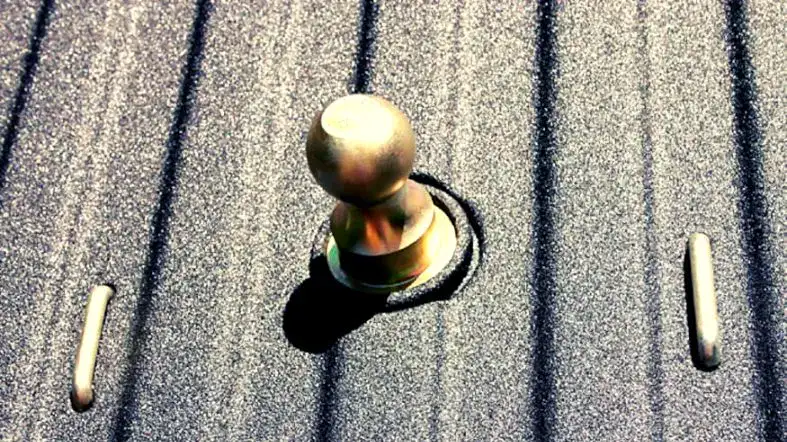
With all the holes drilled, you can now install the gooseneck hitch. First, put the bolts through the frame and then thread on the nuts.
Be sure to tighten them down securely. Next, attach the safety chains.
These typically hook onto a bracket that’s welded to the frame.
Step 5: Attach the side plate brackets
Some hitches come with side plate brackets. These are used to provide additional support for the hitch.
If your hitch has them, follow the instructions to install them now.
When attaching the brackets, be sure to use the proper size bolts and torque them to the specifications in the instructions.
Step 6: Torque the hardware to the proper specification
The final step is to torque all the hardware to the proper specification. This includes the bolts that attach the hitch to the frame and the side plate brackets.
When you’re finished, you can re-install the spare tire and trim panel.
Step 7: Install the safety chain anchors
Most gooseneck hitches come with safety chain anchors. These are typically hooked and bolted to the side of the frame.
They provide a place to attach the safety chains in case the hitch comes loose from the ball.
Follow the instructions to install the anchors in the proper location. Most states also require a breakaway switch.
This is a device that will activate the brakes if the hitch comes loose from the ball.
Step 8: Install the operating handle
The final step is to install the operating handle. This is a simple process of attaching the handle to the hitch with a couple of bolts.
Now you’re ready to start hauling your boat or camper.
Things To Consider When Choosing A Gooseneck Hitch
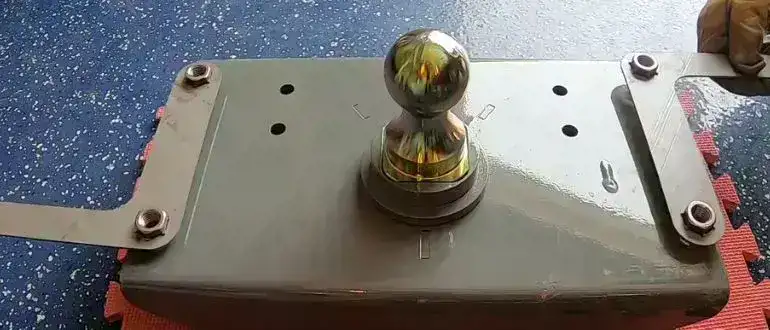
There are a few things to consider when choosing the right gooseneck hitch for your needs.
First, you need to decide what type of trailer you’ll be hauling. This will determine the weight capacity you need.
Next, you need to measure the bed of your truck to make sure the hitch will fit. Finally, you need to decide which features are important to you.
The type of trailer you’ll be hauling is the most important factor in choosing a gooseneck hitch.
The weight capacity you need will be determined by the heaviest trailer you plan to haul.
For example, if you only plan to haul a boat that weighs less than 7000 pounds, then you can choose a hitch with a lower weight capacity.
If you plan to haul a camper that weighs more than 7000 pounds, then you’ll need to choose a hitch with a higher weight capacity.
The next thing to consider is the bed of your truck. Gooseneck hitches are available in different sizes to fit different truck beds.
You’ll need to know the length and width of your truck bed in order to choose the right size hitch. Finally, you need to decide which features are important to you.
Some hitches come with built-in jacks, while others do not. Some hitches have removable balls, while others do not.
And some hitches come with side plates, while others do not. Consider which features are important to you and choose the hitch that has the features you need.
What To Do After You’ve Installed Your Gooseneck Hitch?

Once you’ve installed your gooseneck hitch, there are a few things you need to do in order to keep it in good condition.
First, you should always check the bolts and hardware to make sure they’re tight.
Loose bolts can cause the hitch to come loose from the frame or the side plates to become detached.
When tightening the bolts, be sure to use a torque wrench to ensure they’re tight enough.
Next, you should check the hitch for any signs of wear or damage. Look for cracks, rust, or any other damage that could cause the hitch to fail.
If you find any damage, it’s important to have it repaired before using the hitch again.
Second, you should always grease the hitch before each use.
This will help to prevent rust and keep the moving parts working smoothly.
You should inspect the hitch for any signs of wear or damage after each use. If you find any damage, it’s important to have it repaired before using the hitch again.
Finally, you should inspect the hitch regularly for any signs of wear or damage.
If you see anything that looks out of place, be sure to have it checked by a qualified technician.
Also, be sure to check the bolts and hardware regularly to make sure they’re still tight.
Maintenance Tips for Gooseneck Hitch
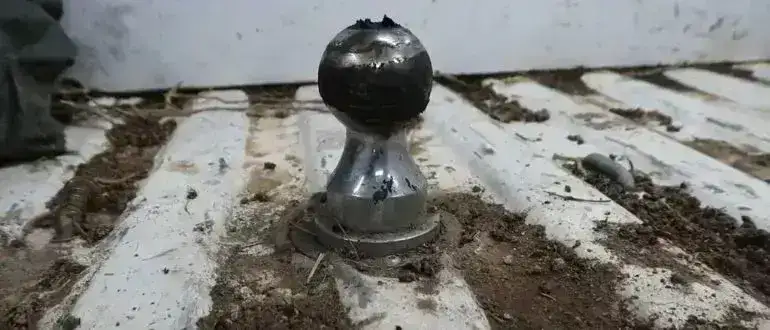
First, check the bolts and hardware to make sure they’re tight. It is important to use a torque wrench when tightening the bolts.
Because loose bolts can cause the hitch to come loose from the frame or the side plates to become detached.
Next, you should check the hitch for any signs of wear or damage. Look for cracks, rust, or any other damage that could cause the hitch to fail.
If you find any damage, it is important to have it repaired before using the hitch again.
It is also important to grease the hitch before each use. This will help to prevent rust and keep the moving parts working smoothly.
You can use a grease gun or a grease fitting. Also, be sure to inspect the hitch for any signs of wear or damage after each use.
If you see anything that looks out of place, be sure to have it checked by a qualified technician.
Furthermore, it is recommended to check the bolts and hardware regularly. This is to ensure that they are still tight and not loose.
On the other hand, if you do not use your hitch often. It is important to grease it at least once a year and check for any signs of wear or damage.
It is also essential to keep the hitch clean and free of debris. So, with proper installation and maintenance, your Gooseneck Hitch will provide you with years of trouble-free use.
What are the Benefits of A Gooseneck Hitch Over Other Hitches?
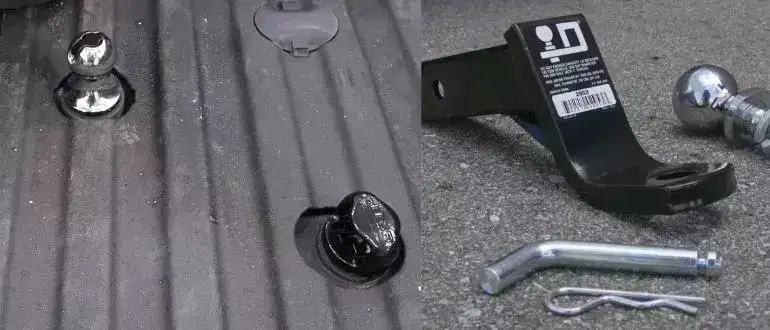
There are many benefits of a gooseneck hitch over other hitches. The benefits we’ll discuss below are crucial:
You need to know that there are four types of hitches Gooseneck, Fifth Wheel, Weight Distribution, and Bumper Pull.
But the gooseneck hitch is the most versatile and can be used for a variety of trailers.
The gooseneck hitch is designed to mount in the bed of your truck instead of the bumper.
This gives you better control when towing and makes turning easier. It also lowers the center of gravity which makes it safer to tow with.
Another benefit of the gooseneck hitch is that it can be removed when not in use. This gives you more space in your truck bed and prevents damage to your bumper.
The gooseneck hitch is also much easier to hook up than other hitches. You don’t have to worry about lining up the ball with the trailer.
All you have to do is lower the hitch into place and it’s ready to go. Overall, the gooseneck hitch is the best choice for towing a variety of trailers.
It’s easy to use, safe, and versatile. If you’re looking for a hitch that can do it all, go with a gooseneck hitch.
FAQs about how to install a gooseneck hitch
Can You Install A Gooseneck Hitch Yourself?
Yes, you can install a gooseneck hitch yourself.
It is important to follow the instructions carefully and use a torque wrench when tightening the bolts.
It is also recommended to check the hitch for any signs of wear or damage before each use.
Is It Hard To Hook Up A Gooseneck Hitch?
No, it is not hard to hook up a gooseneck hitch.
You don’t have to worry about lining up the ball with the trailer.
All you have to do is lower the hitch into place and it’s ready to go.
How Often Should You Grease A Gooseneck Hitch?
It is recommended to grease the hitch before each use.
If you do not use your hitch often, it is still important to grease it at least once a year and check for any signs of wear or damage.
Conclusion
This article has given you some helpful information on gooseneck hitches. As you can see, there are many benefits of a gooseneck hitch over other hitches.
If you’re looking for a hitch that is safe, easy to use, and versatile, go with a gooseneck hitch.
It is important to follow the instructions carefully when installing the hitch.
